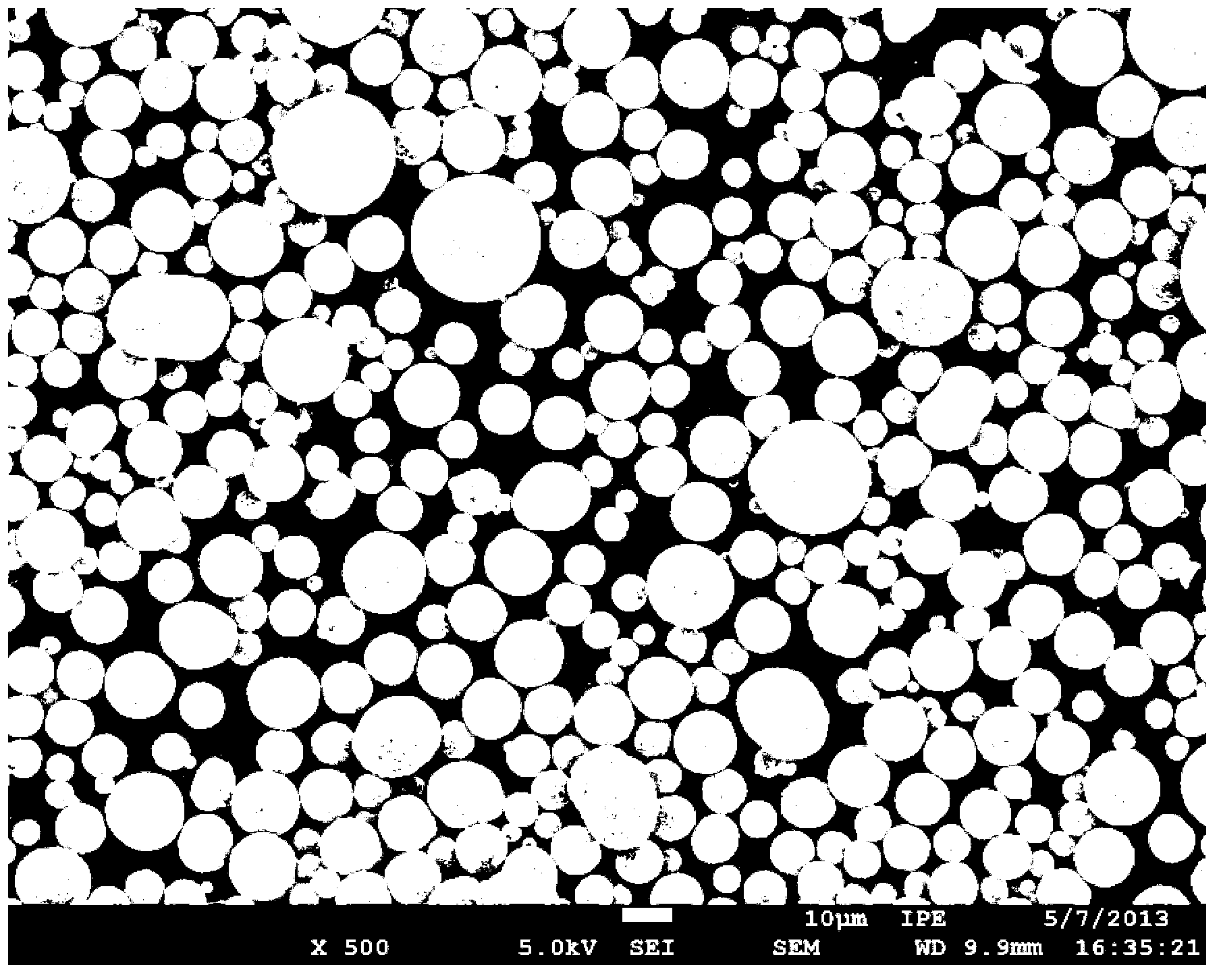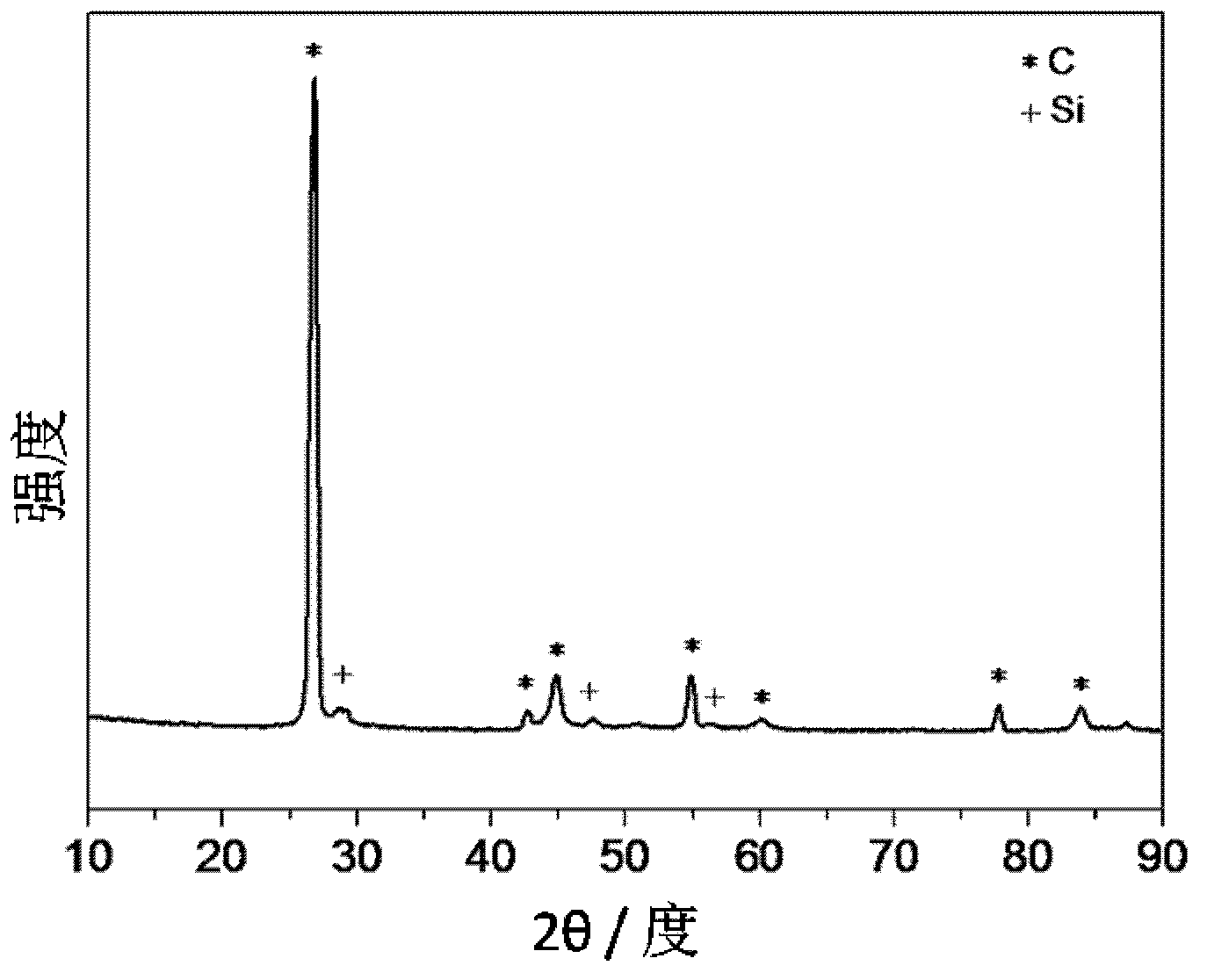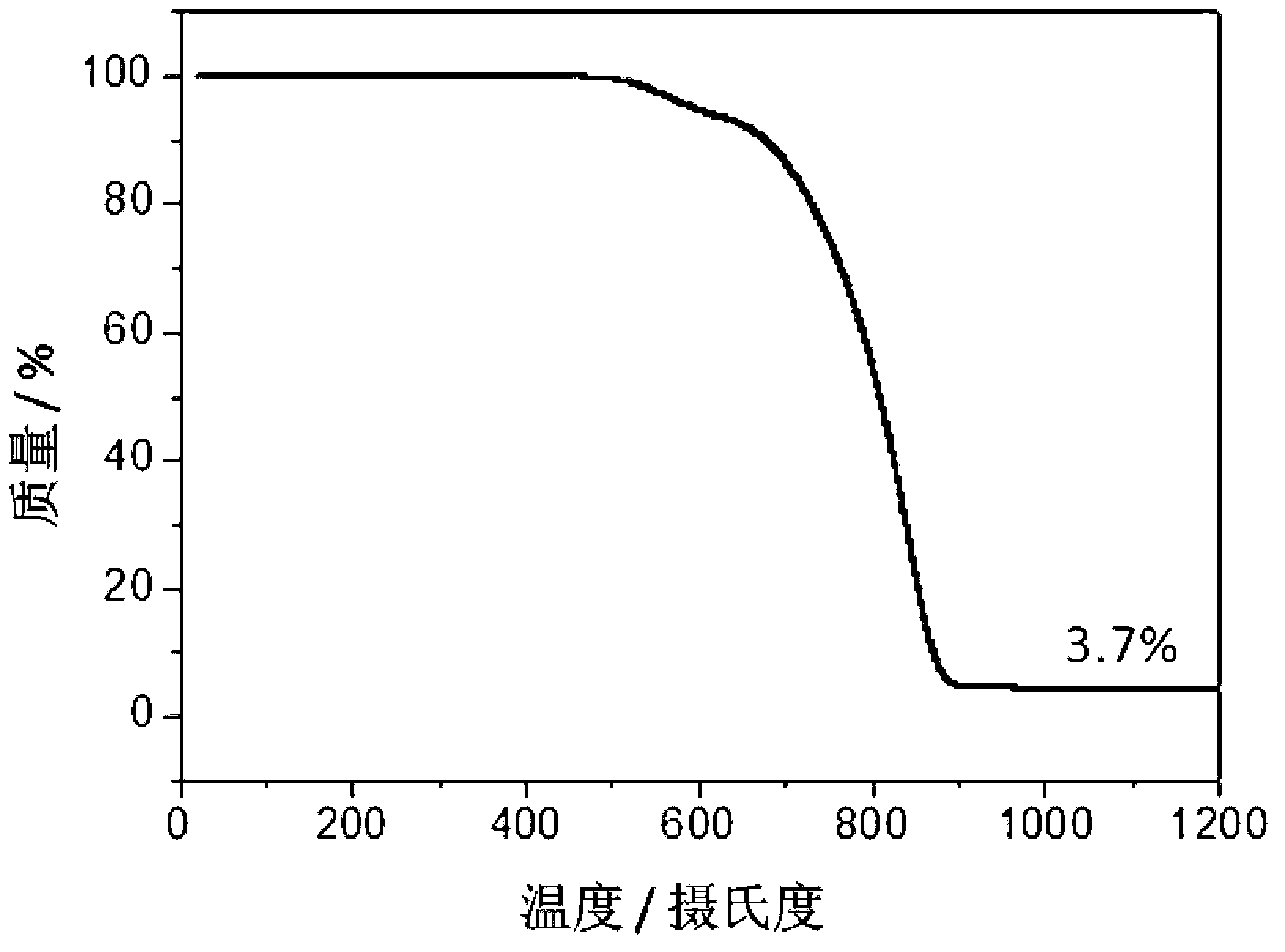Silicon/carbon composite microsphere negative electrode material as well as preparation method and application for same
A negative electrode material and carbon composite technology, applied in battery electrodes, electrical components, circuits, etc., can solve the problems of high delithiation potential, poor cycle performance of silicon-based negative electrode materials, high cost of Si nanowires, etc., and achieve high electronic conductivity and ionization Conductivity, improved structural stability and rate performance, good electronic conductance and ion transport channels
- Summary
- Abstract
- Description
- Claims
- Application Information
AI Technical Summary
Problems solved by technology
Method used
Image
Examples
Embodiment 1
[0082] A method for preparing a silicon / carbon composite microsphere negative electrode material, comprising the steps of:
[0083] (1) Dissolve 3 grams of phenolic resin in 20 grams of ethanol to prepare solution A, mix 10 grams of needle coke treated at 2800°C, 0.5 grams of silicon powder, and 3 grams of tank black treated at 2800°C with 80 grams of water To prepare solution B, mix solution A and solution B and stir at 40°C for 2h;
[0084] (2) Use a spray dryer to dry and granulate the solution to obtain initial microspheres; the inlet temperature of the spray drying is 230°C, and the outlet temperature is 70-150°C;
[0085] (3) The obtained initial microspheres were carbonized at 800°C for 24 hours under a nitrogen atmosphere to obtain silicon / carbon composite microsphere anode materials;
[0086] Wherein, in the prepared silicon / carbon composite microsphere negative electrode material, the mass percentages of silicon powder, soft carbon, carbon black, and hard carbon are...
Embodiment 2
[0092] A method for preparing a silicon / carbon composite microsphere negative electrode material, comprising the steps of:
[0093] (1) Mix 10 grams of oil-based needle coke treated at 2500°C, 0.5 grams of silicon powder, 2 grams of gas black treated at 2500°C, 5 grams of glucose and 200 grams of water, and stir at 40°C for 2 hours;
[0094] (2) Use a spray dryer to dry and granulate the solution to obtain initial microspheres; the inlet temperature of the spray drying is 230°C, and the outlet temperature is 70-150°C;
[0095] (3) The obtained initial microspheres were carbonized at 1200°C for 5 hours under a nitrogen atmosphere to obtain a silicon / carbon composite microsphere anode material;
[0096] Wherein, in the prepared silicon / carbon composite microsphere negative electrode material, the mass percentages of silicon powder, soft carbon, carbon black, and hard carbon are 3wt%, 67wt%, 13wt%, and 17wt%, respectively. Among them, glucose is calculated as 50% converted to ha...
Embodiment 3
[0098] A method for preparing a silicon / carbon composite microsphere negative electrode material, comprising the steps of:
[0099] (1) Mix 20 grams of petroleum coke treated at 2100°C, 1.4 grams of silicon powder, 8 grams of furnace black treated at 2100°C, 20 grams of cornstarch and 800 grams of water, and stir at 30°C for 2 hours;
[0100] (2) Use a spray dryer to dry and granulate the solution to obtain initial microspheres with a particle size of about 3-50 μm; the inlet temperature of the spray drying is 230°C, and the outlet temperature is 70-150°C;
[0101] (3) Carbonize the obtained initial microspheres at 900°C for 2 hours under an argon atmosphere to obtain silicon-carbon composite microsphere anode materials;
[0102] (4) Treat the silicon / carbon composite microsphere anode material in an atmosphere of benzene as the carbon source and argon as the carrier gas at a temperature of 900 ° C and a pressure of 0.2 MPa for 12 hours to obtain a surface coated with a thickn...
PUM
| Property | Measurement | Unit |
|---|---|---|
| Particle size | aaaaa | aaaaa |
| Size | aaaaa | aaaaa |
| Size | aaaaa | aaaaa |
Abstract
Description
Claims
Application Information
 Login to View More
Login to View More - R&D
- Intellectual Property
- Life Sciences
- Materials
- Tech Scout
- Unparalleled Data Quality
- Higher Quality Content
- 60% Fewer Hallucinations
Browse by: Latest US Patents, China's latest patents, Technical Efficacy Thesaurus, Application Domain, Technology Topic, Popular Technical Reports.
© 2025 PatSnap. All rights reserved.Legal|Privacy policy|Modern Slavery Act Transparency Statement|Sitemap|About US| Contact US: help@patsnap.com



